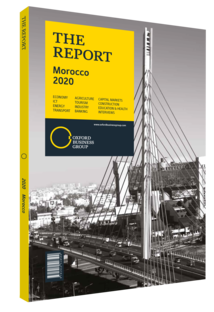Infrastructure investment and vehicle-sharing platforms boost urban mobility
Around the globe the urban transportation sector is experiencing rapid expansion, driven by economic growth and a global demographic shift towards urbanisation. Politicians, urban planners and private sector actors are working together to find new solutions for reducing congestion and increasing the speed and efficiency of urban transport. However, unless proactive steps are taken to plan and invest in well-executed infrastructure, urban mobility can deteriorate.
Road Vehicles
rban residents continue to rely heavily on privately owned vehicles. Worldwide, the number of cars in use is expected to exceed 2bn by 2040, according to investment research firm Bernstein. Much of this will be driven by new vehicle purchases by the burgeoning middle class in emerging markets such as India, China, the Philippines, Indonesia and Vietnam. By 2025 the 600 largest cities in the developing world are expected to house 235m middle-class households earning an average annual wage of over $20,000 a year, according to the McKinsey Global Institute.
In addition, many mega-cities across the globe have experienced significant increases in motorcycle usage. In Mexico City motorcycle ownership increased from just under 294,000 in 2000 to over 3.5m in 2017. “The motorcycle market is relatively new in Mexico; it is growing slowly but hasn’t yet become part of the lifestyle like in other countries,” Fernando Zapata, director-general of Grupo Zapata, told OBG. While the adoption of electric vehicles could help reduce air pollution, it still does not address the congestion problem. Thus, long-term solutions are likely to be driven by public transport.
Rail
In some major cities metro rail lines form the central pillar of the public transport system. The metro system in South Korea’s capital city Seoul transports 7m passengers per day over 1600 km of track. The system includes nine lines and a commuter rail linking the central station to Seoul’s new international airports.
Seoul has set a high standard for urban mass transit, and global governments are looking to catch up. City planners in Algeria inaugurated the country’s first metro line in the city of Algiers in 2011 and in 2018 added two metro lines and two new tram lines. Algiers now has 17 metro stations, which carried between 100,000 and 200,000 passengers per day in 2018.
Other countries are working to adapt older systems for rapidly expanding populations. In Brazil many of the mass transit systems built in the early 20th century were dismantled between the 1930s and 1970s, although Rio de Janeiro and São Paulo are the only two cities that have fully functional underground metro systems. Municipal authorities are undertaking efforts to improve this system further, with a major extension of the São Paulo metro system earmarked for completion by 2020. The expansion project features 11 new stations along 14.4 km of track with four integrated bus terminals, and has been developed under a public-private partnership supported by the World Bank.
In Jakarta severe congestion has rendered buses slow and inefficient. The centrepiece of the city’s public transport overhaul is a mass rapid transit system. The first phase of the project, which opened in March 2019, comprises 13 stations across 16 km of track, connecting the south of the city to the business district. The $1.2bn project is expected to move 170,000 passengers per day. The second phase of the project, which will extend to the north of the city, is expected to open in 2024. The government hopes that public transport will accommodate 60% of commuters by 2030.
Bus
Mass transit systems that are bus-based provide another critical tool for improving urban mobility. In Latin America, Bogotá, Mexico City and Santiago de Chile have invested heavily in this segment. Bogotá’s TransMilenio articulated bus system was an early pioneer in this regard, with 12 routes spanning more than 114 km as of March 2019. The city’s bus network carries more than 1.7m passengers every day.
Smaller cities are also implementing smart bus systems, many of which incorporate new green technology.
You have reached the limit of premium articles you can view for free.
Choose from the options below to purchase print or digital editions of our Reports. You can also purchase a website subscription giving you unlimited access to all of our Reports online for 12 months.
If you have already purchased this Report or have a website subscription, please login to continue.

